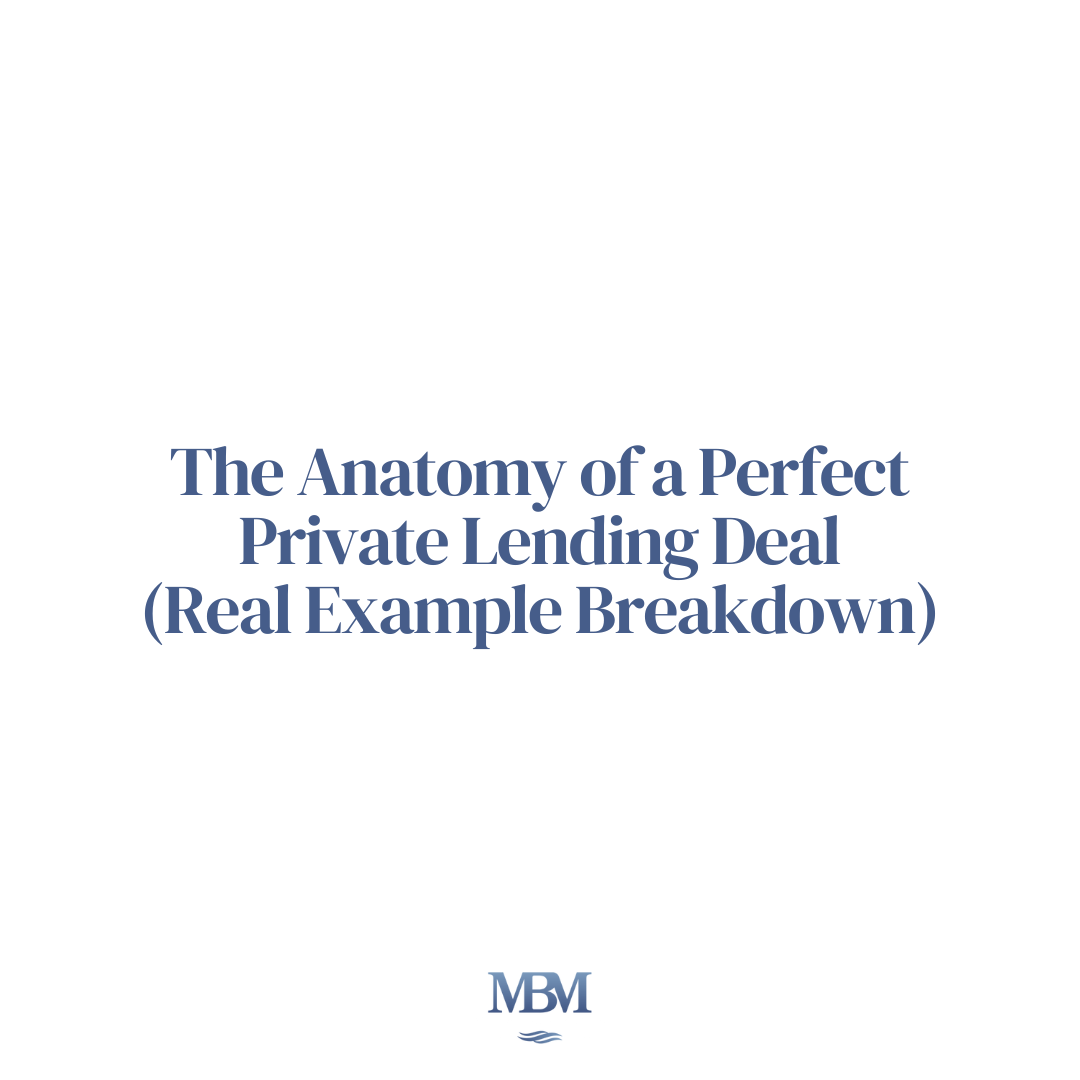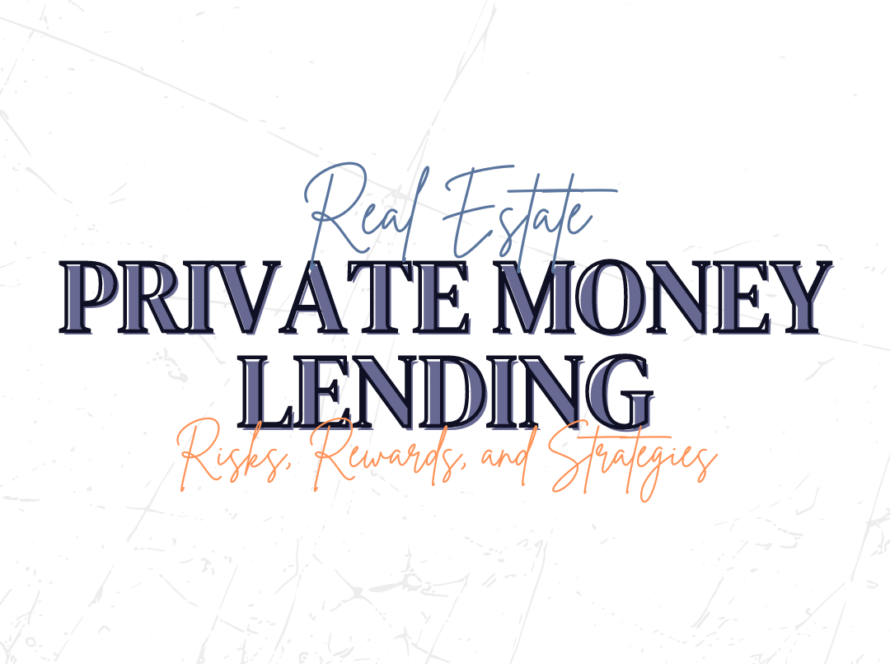Everyone talks about private lending like it’s some magic wealth vehicle. But what actually makes a deal “good”? How do you know when a loan is safe, profitable, and worth funding?
In this post, we’re breaking down the anatomy of an ideal private lending deal—the kind that builds trust, compounds wealth, and lets you sleep at night. You’ll see what goes into it, what numbers matter, and how to protect yourself while still earning 10–12% or more on your capital.
The Truth About Risk in Private Lending and How Smart Lenders Protect Their Capital
The Context Behind the Deal
This isn’t theory. The numbers and structure in this post are based on a real-world scenario built for educational purposes—reflecting how smart lenders approach underwriting, structuring, and deploying capital.
We’re going to walk through:
- The borrower profile
- The property
- The loan terms
- Risk mitigation
- Return analysis
- Lessons learned
Borrower Profile
Name: John (repeat borrower)
Experience: 4 previous flips, 3 exited profitably, one break-even
Credit: 680 FICO
Liquidity: $45,000 cash available
Team: Works with the same contractor, title company, and realtor every deal
Communication: Professional, responsive, organized
Why this matters:
The borrower has execution history, skin in the game, and a reliable team. These are green flags for most lenders.
The Property
Type: Single-family residential
Location: Houston, TX
Purchase Price: $160,000
Rehab Budget: $30,000
After Repair Value (ARV): $260,000
Expected Timeline: 6 months
Lender’s Total Loan: $160,000 (covers purchase only)
Borrower’s Cash Contribution: $30,000 for rehab, plus closing costs
LTV on ARV:
LTV = (Loan Amount ÷ ARV) × 100
LTV = (160,000 ÷ 260,000) × 100 = 61.5%
Why this matters:
Anything under 65% ARV is highly conservative and gives the lender a strong equity cushion in case of default or market shift.
The Loan Terms
Loan Amount: $160,000
Interest Rate: 12% annualized
Term: 6 months
Monthly Payments: Interest-only ($1,600/month)
Points: 2% origination ($3,200 upfront)
Collateral: First-position lien on the property
Exit Strategy: Property resale post-rehab
Total Earned if Paid on Time:
- Interest: $9,600
- Origination Fee: $3,200
- Total Income: $12,800
Why this matters:
Short-term, low-LTV loan with strong return and a realistic exit. Payments are interest-only, meaning the lender gets paid monthly and receives full principal at closing.
Risk Mitigation in the Deal
- Legal Protections:
- Promissory note
- Mortgage recorded with county
- Lender named on insurance
- Rehab escrow held until permit approvals
- Promissory note
- Borrower Skin in the Game:
- $30K rehab + closing = over 15% of total project cost
- $30K rehab + closing = over 15% of total project cost
- Timeline Controls:
- Late payment penalties built into contract
- Automatic default clause after 30 days non-payment
- Late payment penalties built into contract
- Clear Exit Strategy:
- Realtor pre-committed to post-rehab listing
- Comps support ARV
- Timeline includes buffer
- Realtor pre-committed to post-rehab listing
Why this matters:
The lender’s position is legally protected, the borrower has financial incentive to perform, and the exit path is clearly laid out.
Return Analysis
Let’s run the real math on return:
- Capital at Risk: $160,000
- Time at Risk: 6 months
- Gross Return: $12,800
- Annualized ROI:
ROI = (12,800 ÷ 160,000) × (12 ÷ 6) × 100 = 16%
Why this matters:
This beats most stock portfolios—without touching a single tenant or fixing anything.
And the best part? The collateral is always there if the deal fails.
Lessons Learned From the Deal
- Vet the Borrower’s Past Deals
Experience isn’t optional. It’s everything. - Low LTV = Peace of Mind
The more equity the borrower has, the less likely you’ll lose capital. - Monthly Payments Build Trust
You stay in the loop and know if anything’s going sideways. - Documentation Isn’t Optional
Every deal should be locked in with clear, enforceable paperwork. - Be Ready to Say No
If this borrower didn’t bring solid numbers or a team, it would’ve been a pass—no matter how shiny the property looked.
How The MicroBanking Method Helps You Find and Fund Deals Like This
You don’t need to be a real estate pro or have decades of experience to fund safe, profitable deals like this one.
The MicroBanking Method gives you the step-by-step system to:
- Source trustworthy borrowers
- Underwrite deals with speed and precision
- Structure loans that protect you from downside
- Reinvest capital with a clear wealth-building rhythm
Whether you’re starting with $20K or scaling past $500K, this system turns private lending into a business—not a gamble.
Conclusion
Great private lending deals don’t happen by accident—they’re built on discipline, structure, and the right tools.
Now you’ve seen what a well-structured, high-yield, low-risk deal actually looks like. Use it as a reference point. Don’t settle for less. Don’t skip steps.
Want help finding or structuring your next perfect deal?
Visit The MicroBanking Method and start funding like a pro.




